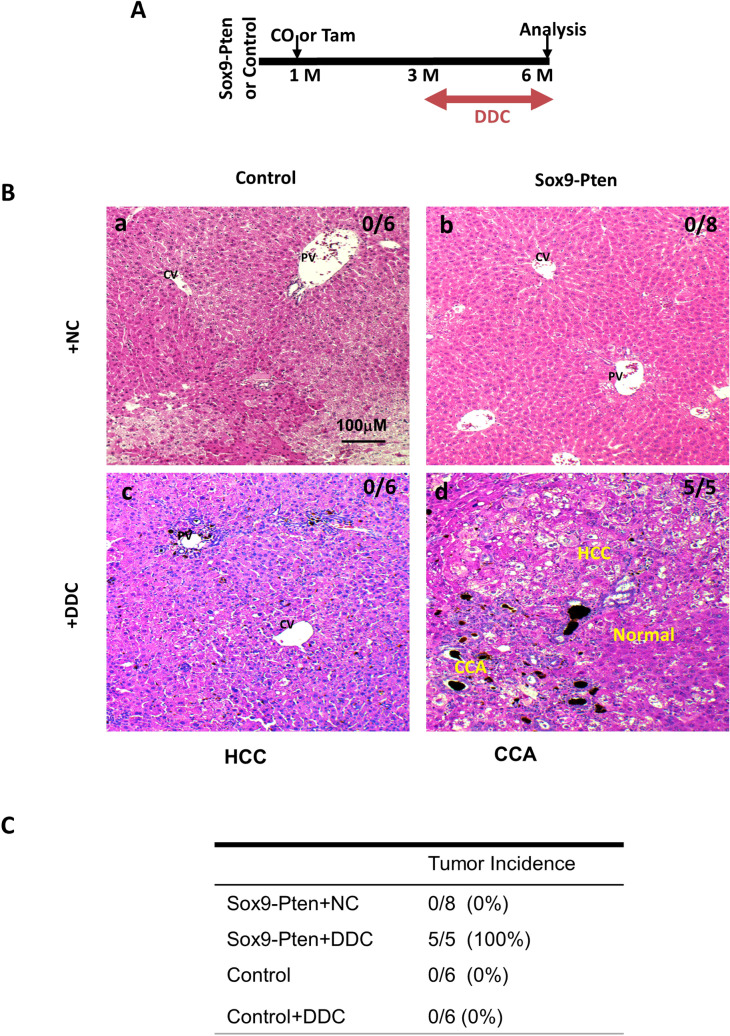Figure 3.
Inducing liver injury with DDC accelerates liver carcinogenesis in Sox9-Pten mice. (A) Protocol for tamoxifen injection and DDC treatment. Tamoxifen injected Sox9-Pten (n = 5) and control (n = 6) mice were fed on DDC for 3 months to induce liver injury before liver tissues were collected for analysis at 6 months old. Normal chow (NC) was used as diet control for DDC treatment in Sox9-Pten (n = 8) and control (n = 6) mice, respectively. (B) Representative microscopic images of the livers from Sox9-Pten and control mice on DDC and NC. a, Pten genotype control mice fed on NC. b. Sox9-Pten mice fed on NC. c. Pten genotype control mic fed on DDC diet. d. Sox9-Pten mice fed on DDC diet. (C) Quantitative analysis of tumors development in Sox9-Pten mice and control mice treated with DDC vs. NC. (D) Immunochemical and H&E staining on serial sections of the tumors developed in DDC treated Sox9-Pten mice vs. controls. Panels a&b, Control mice treated with DDC. Panels c & d, Sox9-Pten mice treated with DDC. Green, YFP. Red, either HNF4α (a and a′; c and c′) or CK (b and b′; d and d′). Both ductal hyperplasia in control (b and b′) and tumor formation in Sox9-Pten mice (d and d′) are positive for YFP, indicating that these are SOX9+ cells in origin. Panels a′-d′, amplified views of the boxed areas in a-d respectively. Blue, DAPI. Control mice are: Pten loxP/loxP; Cre- mice with no treatment; Pten+/+; Sox9-CreERT mice treated with either corn oil (CO) or tamoxifen; or PtenloxP/loxP; Sox9-CreERT mice treated with coil oil.


